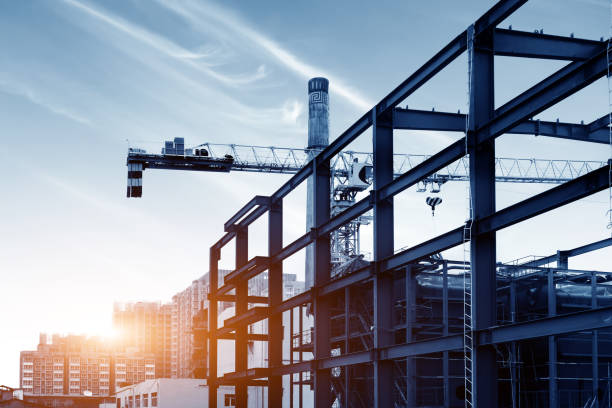CONSTRUCTION DEVELOPMENT

Ranking third after mining and agriculture, Mongolia’s commercial and residential construction sector contributed about 13 percent of GDP in 2016 and around 15 percent of total FDI. Over 80,000 people work in the construction sector, and the industry generates 130,000 jobs in related fields. Since 2012, commercial and residential building stock has increased due to government backing, spurred by continuing expectations of a mining-led economic boom. Mongolia produces about 60 percent of its construction materials domestically and imports the remaining 40 percent, and seeks to domestically produce as much of these materials as possible. To this end, the Ministry of Construction and Urban Development has stated that the government will waive import and value-added taxes on construction equipment and related technologies that can be used to create a Mongolia-based construction sector.
The cost of building new property in Mongolia is around $750 per sq. meter. The average price of a new apartment in the capital city’s central area is $800-1,400 per sq. meter. The largest construction market is in the capital city of Ulaanbaatar, where nearly half of Mongolia’s 3 million citizens live. As of 2016, 60 percent of the total population of Ulaanbaatar lives in ger (traditional felt tent) districts. Housing those who live in these less-developed peri-urban districts will require not only new residential stock but an upgrading of related infrastructure, including roads, water facilities, and power plants.
|
|
2013 |
2014 |
2015 |
|
|
Total Local Production |
4,388 |
6,127 |
5,092 |
4,678 |
|
Total Exports |
4,269 |
5,774.3 |
4,669.5 |
4,046 |
|
Total Imports |
6,358 |
5,236.7 |
3,797.2 |
3,466 |
|
Imports from the U.S. |
512.7 |
229.5 |
116.5 |
55.6 |
|
Total Market Size |
6,477 |
5,590 |
4,220 |
4,098 |
|
Exchange Rate: 1 USD |
1,524 |
1,818 |
1,970 |
2,130 |
Data Sources:
Total Local Production: National Statistics Office of Mongolia
Total Exports: Bank of Mongolia
Total Imports: Bank of Mongolia
Imports from U.S.: U.S. Census Bureau
Leading Sub-Sectors and Opportunities
In response to shortfalls of housing stock and related infrastructure, the government emphasizes building new residential apartments, and enhancing necessary infrastructure to address the shortage of apartments. This effort also includes building outside of the current metropolitan area to encourage out-migration and ease pressure on the infrastructure of Ulaanbaatar Capital City.
Government Housing Programs
-
Housing for 100,000 Households: A government program that plans 75,000 units for the capital and 25,000 for the Mongolian countryside (apartments for at least 1,000 households per province in the countryside offering five percent mortgages) and the Ulaanbaatar city government’s Ger Area Land Re-adjustment plan, which is reforming ger areas around city. The mayor’s office is also receiving technical support and possible financing from the Asian Development Bank (ADB) for affordable housing.
-
The Infrastructure Project: This program, with funding from the Development Bank of Mongolia, aims to accelerate new development projects, build infrastructure and engineer public utilities, and carry out technological upgrades in water supply and wastewater treatment. The government expects additional contributions from international donors such the ADB, Japan, China, and France.
-
A new urban area is envisioned around Ulaanbaatar’s new airport.